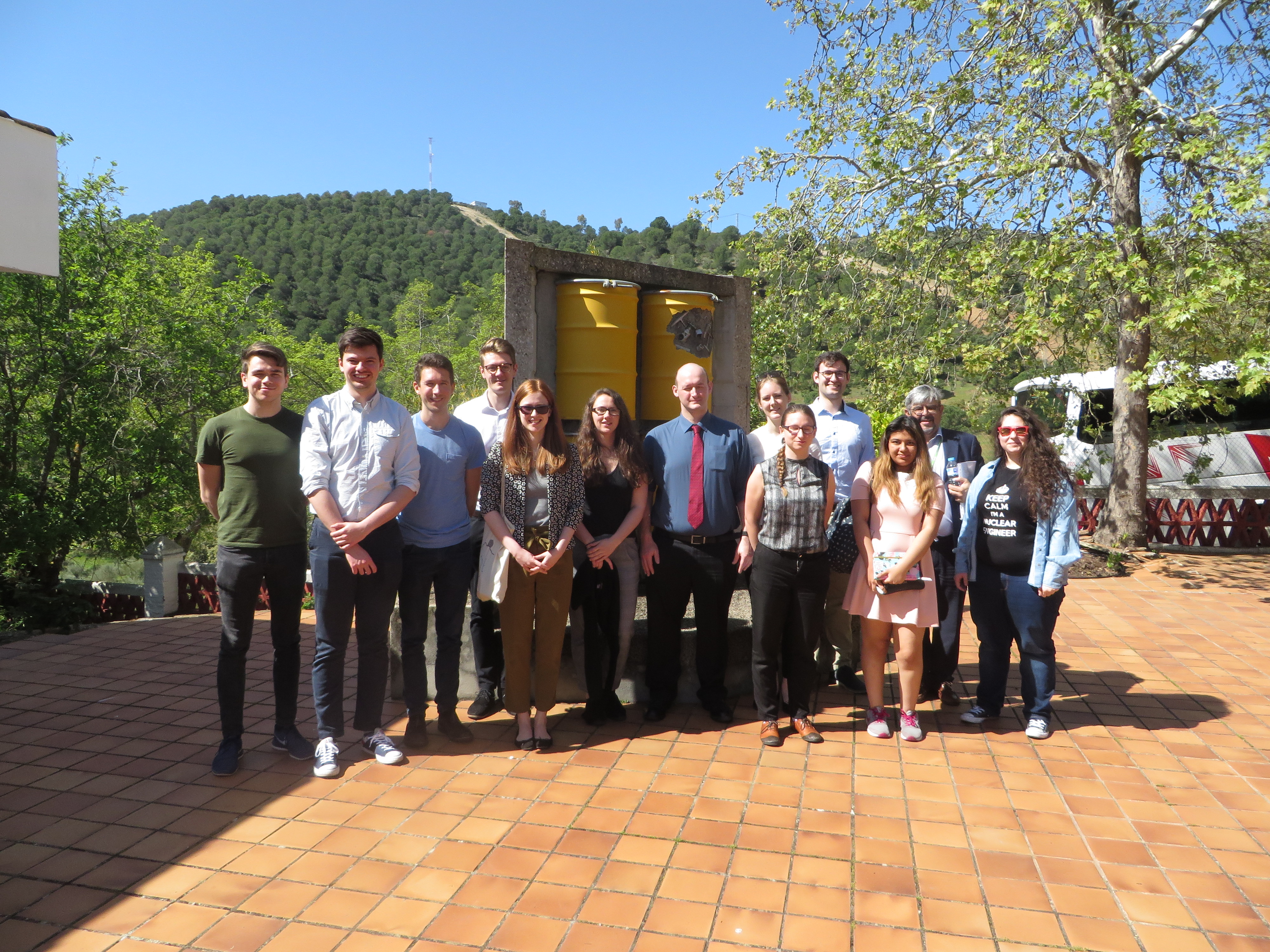As someone who hopes to have a career in the nuclear industry, I was excited when the Nuclear Institute London/SE branch offered members the opportunity to visit two of Enresa’s nuclear decommissioning and waste management facilities in Spain. Enresa is the Spanish equivalent of our Nuclear Decommissioning Authority (NDA).
I believe that it is extremely important to be aware of other country’s practices in the field of nuclear decommissioning, as I think that it helps the sector overall to learn lessons from each other. The trip participants were diverse, with employees from EDF, Magnox, CRA and Atkins present. In addition, five nucleargraduates also attended the trip. Our host was Ioanna Playbell from Idom Merebrook.
Our first stop on this trip was the ‘El Cabril’ waste repository located in the Córdoba province of southern Spain. This is where all the very low, low and intermediate-level waste in Spain is stored in the near-surface facilities. Most of the waste that comes to El Cabril comes from nuclear power plants which are already pre-conditioned and transported in special drums. We also learnt in our site tour that there are also waste conditioning facilities to treat waste that comes from smaller institutions such as hospitals and universities.
As a group, we then had embarked on a five-hour coach trip to the capital to stay for the night. The day after we then had the pleasure to visit Spain’s first ever nuclear power plant, ‘José Cabrera NPP’, operating since 1968 and ceasing operations in 2006. It is also the first to be dismantled in the country, with decommissioning activities having commenced since 2010 when Enresa took over ownership of the plant. On a personal level, I enjoyed seeing up close what a nuclear power plant undergoing decommissioning actually looked like in practice. It puts into perspective the reading that you have done in the subject; it is certainly a lot more complex than it appears to be, with a variety of activities in the Decommissioning Auxiliary Building (DAB) happening at any one time.
What particularly struck out for me was the control room of José Cabrera. What remains of it now is a completely empty, dark concrete room. It was unbelievable to think that a couple of decades ago, the nuclear power plant would be operated from this disused room that I was standing in. It made me realise that nuclear power plants are not structures that will stand the time of history, and eventually have to be taken down. It also confirmed to me the importance of new nuclear reactors being built should be built with eventual decommissioning in mind.
This unique, once-in-a-lifetime trip made me realise the diversity of approaches when it comes to decommissioning and managing radioactive waste. The key thing that I got from both of these technical tours is the efficient way activities were taking place, and how Enresa are safely conducting them. It gives me greater faith that those who are in this sector are able to take on the challenges that decommissioning presents to us.
Nuclear power plants are like human beings: they are born, they live their years, but eventually must cease to exist. It is that final, funeral process that must be taken care of properly. José Cabrera and El Cabril are leading examples of how, given the right resources, staffing and funds, that safe and timely nuclear decommissioning can occur, and eventually return the site to a green-field status.
I would like to thank the Nuclear Institute for the opportunity to allow me to attend this trip, and I look forward to other technical tours the Institute will offer to members in the future.
By Elrica Degirmen
